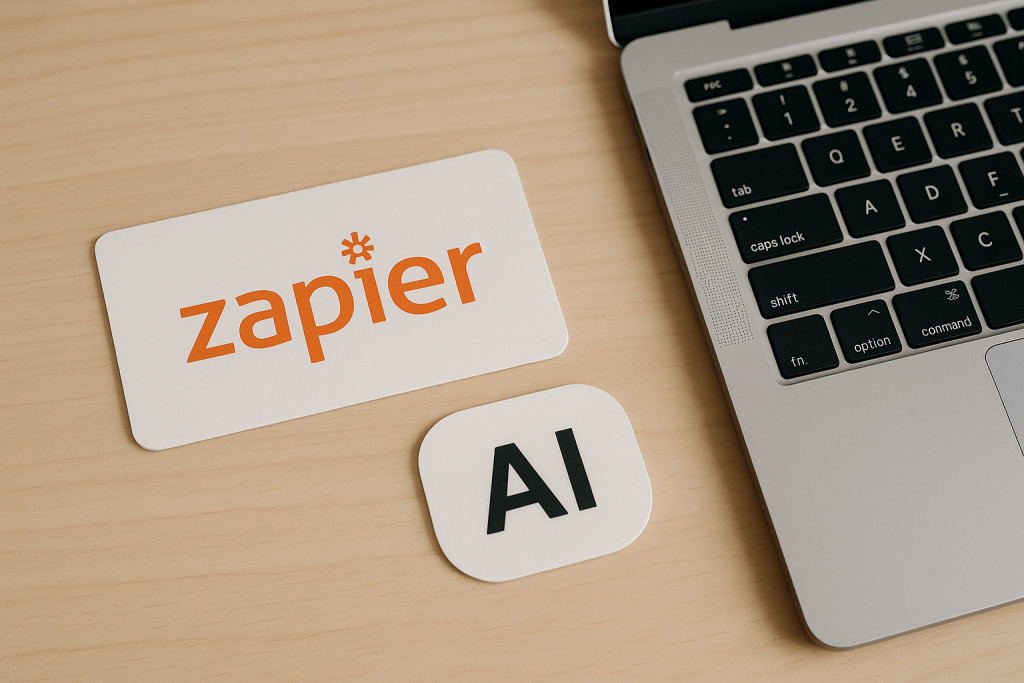Still a Good Choice in 2025?
In a world where automation has become a cornerstone of productivity, tools like Zapier have long held a prominent place. But in 2025, with the meteoric rise of generative artificial intelligence and autonomous assistants, a legitimate question arises: Is Zapier still relevant in the age of AI — or is it time to rethink things through a more integrated, future-proof perspective?
The Legacy of Zapier
Zapier was one of the first tools to democratize no-code automation. Its principle is simple: connect two or more apps through “zaps” (automation scenarios). * You receive an email in Gmail? It can automatically add it to Notion. * A new lead in Facebook Ads? It’s sent to your CRM.
In 2025, Zapier offers over 6,000 integrations. Its strength lies in this ecosystem depth and its robustness. It continues to excel in simple, reliable, and stable automations — especially for businesses managing customer relations, marketing, or reporting.
The Rise of AI-Enhanced Automation
Since 2023, a wave of tools integrating generative AI has changed the game.
Today, users expect not only automation but also: * Intelligent context understanding * Content creation * Autonomous decision-making
Tools like Bardeen, Make (formerly Integromat), or n8n.ai now offer hybrid features: automation + AI reasoning. Some can interpret text, generate summaries, or trigger scenarios based on intent rather than a simple event.
Zapier’s Response: AI Actions
In response, Zapier introduced: * Zapier AI Actions * Integration with ChatGPT
These allow you to add “smart” steps to your workflows. For example: * Generate an email summary with GPT * Translate content * Suggest a relevant reply
But let’s be clear: Zapier remains linear. Even with AI, it still functions as a link in the chain — not as an autonomous agent.
Where Zapier Hits Its Limits in 2025
In 2025, more advanced no-code tools enable the creation of intelligent agents — bots that: * Browse the web * Converse * Reason * Adapt to complex contexts
This is where Zapier begins to show its limits.
Additionally, its pricing model can become costly as automated tasks increase. Open-source competitors like n8n, or native AI automation in tools like Notion AI or Slack AI, are attracting freelancers and startups looking for agility and savings.
But Zapier Hasn’t Lost Its Relevance
Zapier is still ideal for: * Non-technical users wanting quick onboarding * Companies needing compliance (GDPR, logs, SSO…) * Simple to moderately complex workflows between major apps (Google Workspace, Slack, Airtable…)
Zapier’s interface has also improved with: * Visual automation builder * AI-assisted setup * Better error handling
The Best Approach in 2025?
Combine Zapier + AI smartly: * Use Zapier to connect your tools and trigger flows * Add GPT (OpenAI, Anthropic…) for intelligent processing * Use Bardeen for browser-based actions * Add Make.com for more dynamic, conditional workflows
Think of Zapier as the conductor of your digital orchestra — while AI agents are the instruments.
Final Verdict
Zapier remains an excellent choice in 2025, but it’s no longer the only or most advanced automation tool.
For those who combine it strategically with AI components and modern tools, Zapier + AI becomes a powerful ally to: * Save time * Streamline processes * Stay competitive

